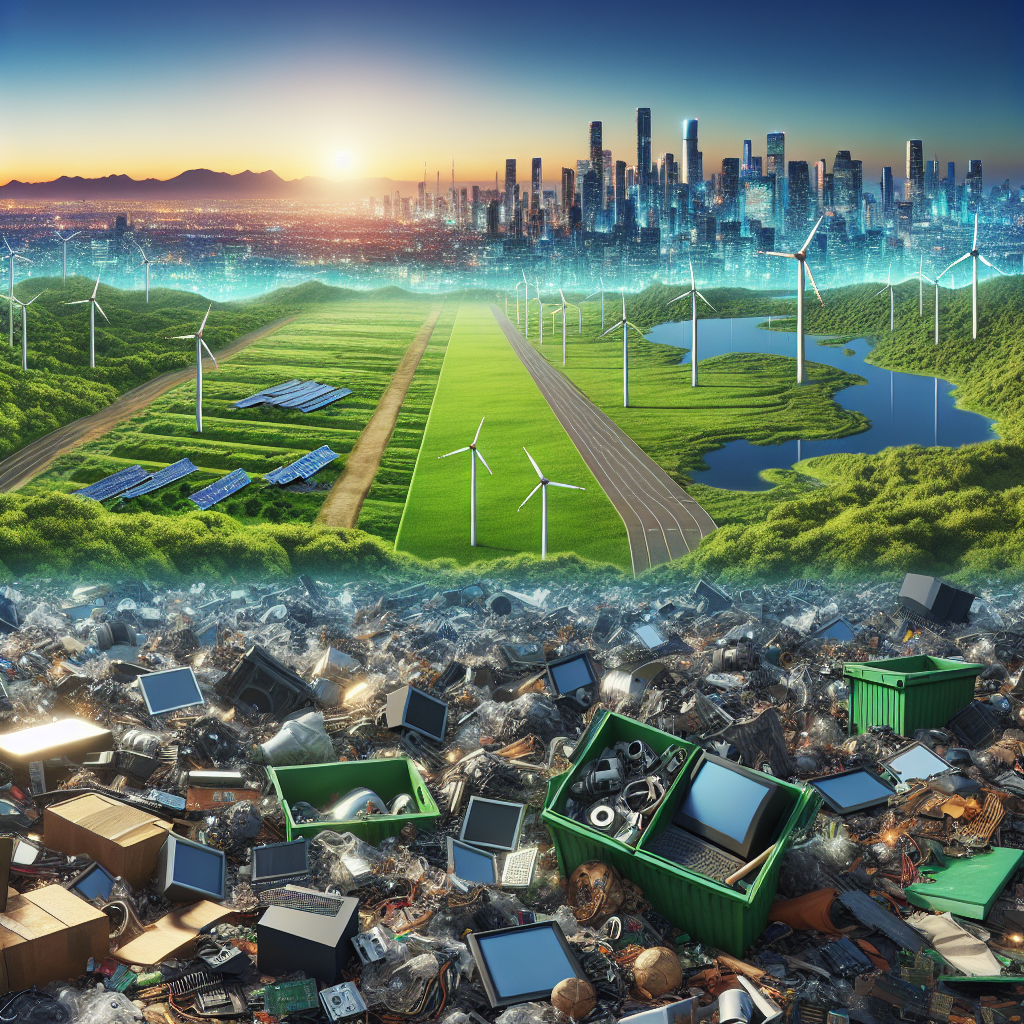E-Waste, Sustainability, and Humanity: Navigating Through the Digital Age’s Shadow
In the era of rapid technological advancement, the digital age has bestowed countless benefits upon humanity, from instant communication across the globe to the ease of accessing vast amounts of information in seconds. However, lurking in the shadow of these advancements is a growing environmental and societal challenge: electronic waste (e-waste). This article delves into the multifaceted issue of e-waste, its implications for sustainability, and the broader impacts on humanity, while also exploring some controversial viewpoints that have emerged in the discourse.
The Unseen Cost of Innovation
As consumers eagerly await the latest electronic gadgets, few consider the lifecycle of the devices they replace. The cycle of producing, consuming, and discarding electronics has led to an alarming increase in e-waste. Unlike ordinary trash, e-waste contains hazardous substances, including lead, mercury, and cadmium, which pose significant health and environmental risks when not properly disposed of.
Sustainability at Stake
The surge in e-waste directly challenges global sustainability efforts. The extraction of precious metals and other materials needed for electronic devices often results in environmental degradation, including habitat destruction and pollution. Furthermore, the energy-intensive production processes contribute significantly to carbon emissions, exacerbating the climate crisis.
Humanity’s Burden
The impact of e-waste extends beyond environmental degradation, touching the very fabric of societies. In many developing countries, informal sectors have emerged to handle the influx of e-waste, often employing low-income individuals in hazardous conditions. These workers are exposed to toxic substances without adequate protection, leading to serious health issues and further entrenching cycles of poverty and inequality.
Controversial Viewpoints
Amid these challenges, some controversial viewpoints have surfaced. Proponents of technological advancement argue that the benefits of digital innovation outweigh the environmental and societal costs. They advocate for the development of cleaner, more efficient production technologies and the potential for the digital economy to mitigate other forms of environmental damage.
Conversely, critics argue that the pace of technological advancement is unsustainable and that society’s reliance on electronic devices has become a form of addiction, driving consumerism and waste. They call for a radical rethinking of how technology is integrated into daily life, emphasizing repair, reuse, and sustainable design over constant consumption.
Navigating Through the Controversy
The debate around e-waste and sustainability is complex, with valid arguments on both sides. However, it is clear that addressing the issue requires a multifaceted approach. This includes improving e-waste recycling technologies and infrastructure, enforcing stricter regulations on hazardous substances in electronics, and promoting consumer awareness and behavior change towards more sustainable consumption patterns.
The Role of Innovation and Policy
Innovation plays a critical role in solving the e-waste problem. Advances in sustainable materials and production processes can reduce the environmental impact of electronic devices. Similarly, policy interventions, such as extended producer responsibility (EPR) schemes, can incentivize manufacturers to design products that are easier to recycle and contain fewer hazardous materials.
A Path Forward
As society grapples with the challenges of e-waste, the path forward requires collective action from governments, industry, and consumers. By embracing sustainable practices, supporting regulatory reforms, and fostering innovation, it is possible to mitigate the negative impacts of e-waste and move towards a more sustainable and equitable digital age.
FAQs
1. What is e-waste?
E-waste refers to discarded electronic appliances and gadgets such as computers, smartphones, televisions, and refrigerators. It is problematic due to its toxic components and the challenges it poses to disposal and recycling.
2. Why is e-waste a problem for the environment?
E-waste contains hazardous materials that can leach into soil and water, harming ecosystems and human health. Its improper disposal and recycling also contribute to global pollution and carbon emissions.
3. How can I reduce my e-waste?
You can reduce e-waste by extending the life of your devices through proper care, choosing to repair rather than replace, purchasing refurbished electronics, and recycling old devices responsibly.
4. What are sustainable practices for dealing with e-waste?
Sustainable practices include designing electronics that are easier to repair and recycle, using fewer toxic materials in production, and implementing take-back programs to ensure responsible recycling.
5. How does e-waste impact developing countries?
Developing countries often bear the brunt of e-waste disposal, with many becoming dumping grounds for the world’s electronic waste. This not only poses environmental risks but also exposes workers in informal recycling sectors to health hazards.
In conclusion, the issue of e-waste and its implications for sustainability and humanity is a pressing concern that demands immediate attention. By fostering a deeper understanding of the challenges and engaging in collective action, society can navigate through the digital age’s shadow towards a brighter, more sustainable future.

